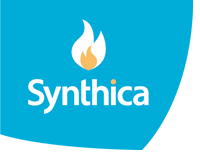Anaerobic digestion technology has been available in the US for many years – it’s a tried and true technology. However, in the early days, most digesters were built on livestock farms or attached to sewage treatment plants. Since livestock and sewage treatment plants typically are known for having their own particular odor issues, early digesters didn’t worry about odor control.
In fact, if you look at most digesters in Ohio and surrounding states today, you’ll see that many have open lagoons that they dump waste materials and sewage into – bottom line, the technology at these plants simply is not designed and cannot handle odor issues.
At Synthica Energy, we do not believe this is a sustainable approach. Instead, we focus on “Urban-Friendly Digestion”. Instead of ignoring the issue and trying to pinch pennies on digester design, Synthica Energy’s facilities are designed with advanced odor elimination in mind. We know that when locating a digester, odor management is going to be an issue that regulators and municipalities will have questions about, and we invest in solid solutions that provide for these concerns.
Therefore, there are several critical odor elimination components that all of our digesters utilize.
First and foremost, our digesters are completely sealed vessels – it’s critical to our process that the anaerobic digestion process takes place in an oxygen-free environment, so at no time are the digesters themselves open to the environment.
Secondly, we do not use open lagoons or staging areas to hold our feedstocks, and we do not process any human wastes (treated sludge) from sewage treatment plants. Instead, all of our feedstocks come from food and organic product manufacturing.
We therefore have two primary methods for waste offloading: indoor tipping and liquid pump stations.
For organic liquids (such as spent brewer’s yeast), 5,500 gallon tanker trucks pull into our driveway, attach to our piping infrastructure, and pump their liquids directly into our cold digester. This is a digester that is “dead” and is merely used to bring the materials up or down to the proper temperature. Our hauling partners’ drivers will undergo specific training and digester offloading certification, and have experience at preventing spills as they connect and pump out.
For materials that are more solid and cannot be pumped, our hauling partners will instead enter our enclosed receiving building. Once their entire vehicle is in the building, the doors to the building will be completely closed and high powered fans will create a negative air pressure environment so that air from the outside is actually pulled into the building (which means no odors can escape).
The truck will then offload its material into a receipt hopper, which will be loaded into the digester.
Outside the building, the negative air pressure fans will push their volume of air through a biofilter, which is a filter that uses carbon to trap odors and prevent their release into the environment. Even when you are standing right on top of the biofilter, you cannot smell any offensive odors.
By making a major investment in these advanced odor elimination technologies, Synthica Energy’s digesters will be a reliable, non-invasive part of the regional energy and disposal infrastructure for years to come.

